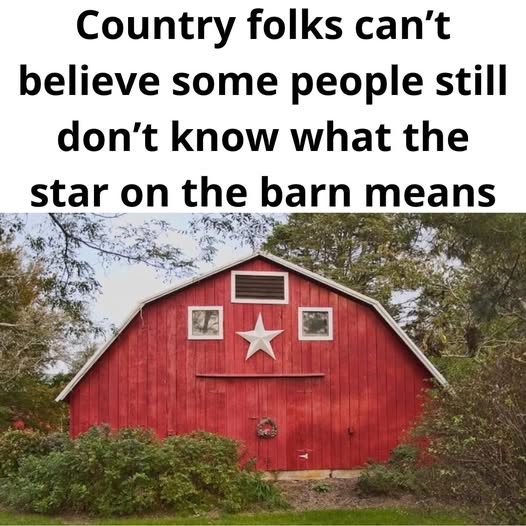If you’ve ever driven through rural areas and spotted a large, five-pointed star on a barn or farmhouse, you may have wondered what it represents. These stars, often called barn stars, Amish stars, or hex signs, have been part of American farm culture for generations. Their origins go back to the 18th and 19th centuries, when Pennsylvania Dutch farmers—descendants of German settlers—believed that hanging a star on a barn would bring luck and protection to their land, animals, and harvest.
Beyond their shape, the colors of barn stars carried specific meanings. Red often symbolized good fortune and strength, blue represented peace and balance, green stood for growth and renewal, black offered protection, and white reflected purity and hope. Some stars featured intricate hex sign designs, with geometric patterns similar to mandalas, which added deeper layers of symbolism related to prosperity, harmony, and family pride.
Over time, barn stars transitioned from purely symbolic emblems to decorative elements that expressed identity and heritage. Farmers used them as personal markers of craftsmanship and ownership, turning them into meaningful, artistic statements. Even today, these stars can still be seen on barns, sheds, and other rural structures, symbolizing tradition and storytelling across generations.
In modern times, barn stars have become popular home décor pieces seen on garden walls, patios, and suburban houses. While they are no longer widely used for protection or superstition, they continue to evoke nostalgia, simplicity, and a connection to rural roots. So the next time you spot one, remember—it’s more than just a decoration; it’s a symbol of history, family, and the enduring desire to leave a lasting mark.
